Origami, the ancient Japanese art of paper folding, unveils a world of creativity and precision. Amidst the intricate folds and delicate craftsmanship lies a pivotal concept known as the “collapse.”
In a mere sheet of paper, this technique embodies the transformation from two-dimensional simplicity to the mesmerizing complexity of three-dimensional origami masterpieces.
The term “collapse” signifies the moment when meticulous creases, ingenious folds, and artistic vision converge, birthing captivating forms and intricate designs.
This transformative process is not just about folding; it’s a symphony of dexterity, patience, and ingenuity that brings flat paper to life, giving it depth, dimension, and artistry.
Explore the enchanting world of origami collapse, where imagination meets precision and paper transcends its humble origins.
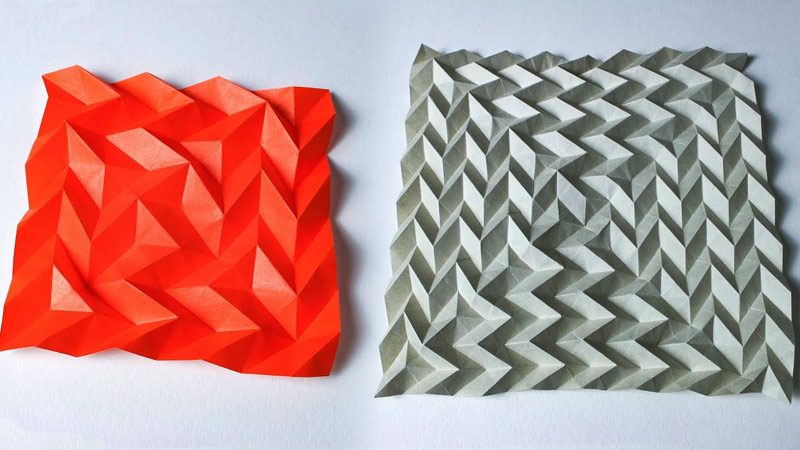
What Does Collapse Mean in Origami?
In the world of origami, the term “collapse” refers to a crucial and intricate step in the folding process that transforms a flat sheet of paper into a three-dimensional object, often creating the final shape of the origami model.
The collapse is a pivotal moment that requires precision, dexterity, and a deep understanding of the paper’s properties.
Origami, the traditional Japanese art of paper folding, is not just about making simple paper airplanes or cranes.
Skilled origami artists can create intricate and complex sculptures of animals, plants, and various objects using just a single sheet of paper, without the use of scissors or glue.
Achieving these complex forms often involves a series of carefully orchestrated folds, and the collapse is a pivotal step that brings all those folds together.
Here’s how the collapse process typically works in origami:
Initial Folds
The folding process begins with basic folds such as mountain folds (folding the paper towards you) and valley folds (folding the paper away from you). These preliminary folds lay the foundation for the more intricate design to come.
Precreases
To guide the paper into the desired shape, precise precreases are made along specific lines and angles. These precreases serve as markers for where the final folds will be.
Squash Folds and Reverse Folds
These are common intermediate steps in origami that often lead to the collapse. Squash folds involve opening up the paper and folding it flat, while reverse folds create pockets and flaps within the paper.
Collapse
The collapse is the stage where everything comes together. The origami artist carefully manipulates the paper, following the precreases and the model’s instructions, to bring all the folds and flaps into alignment.
This often involves intricate maneuvers, tucking layers of paper into one another, and making sure everything fits together seamlessly.
Final Shaping
After the collapse, the artist refines the model’s shape, adjusting angles and proportions as needed to achieve the desired outcome.
15 Types of Origami
Origami is a versatile and creative art form that offers a wide range of folding techniques and styles.
Here are some of the most popular types of origami:
1. Traditional Origami
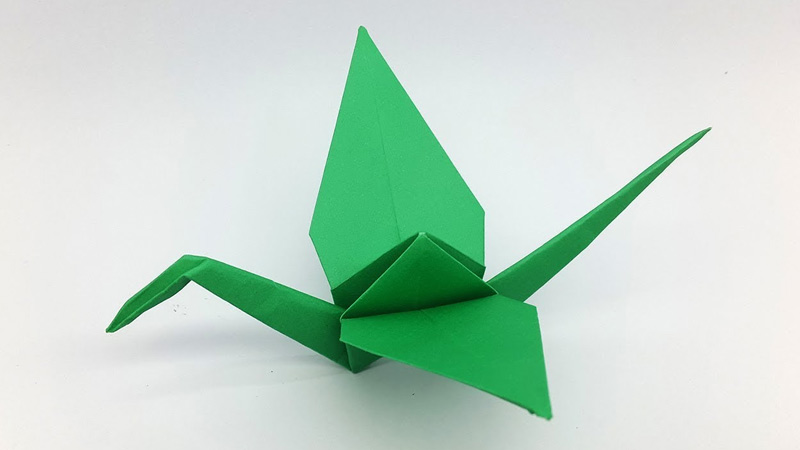
Traditional origami forms the bedrock of this ancient art. These designs, often simple yet elegant, have been handed down through generations.
They emphasize the fundamental principles of origami, including the use of a single sheet of paper and folding without cutting or gluing.
Iconic examples include the graceful crane symbolizing peace, the classic boat with its playful simplicity, and the intricate samurai helmet, which pays homage to Japanese culture.
2. Modular Origami
Modular origami is a captivating style that involves creating intricate structures by assembling multiple units of folded paper.
These units, often geometric in nature, interlock to form larger and more complex shapes. The Sonobe and kusudama balls are prime examples of modular origami.
These projects showcase the mesmerizing interplay of shapes and colors that can be achieved by meticulously assembling individual folded units.
3. Wet-Folding Origami
Wet-folding origami is an expressive technique pioneered by origami master Akira Yoshizawa. It introduces an element of fluidity and sculptural freedom to origami.
Here, the paper is slightly dampened before folding, allowing it to take on organic and curved forms more easily.
Wet-folding is often used for creating lifelike animals and organic shapes, as the damp paper retains its shape more gracefully, resulting in beautifully rounded and textured origami creations.
4. Tessellation Origami
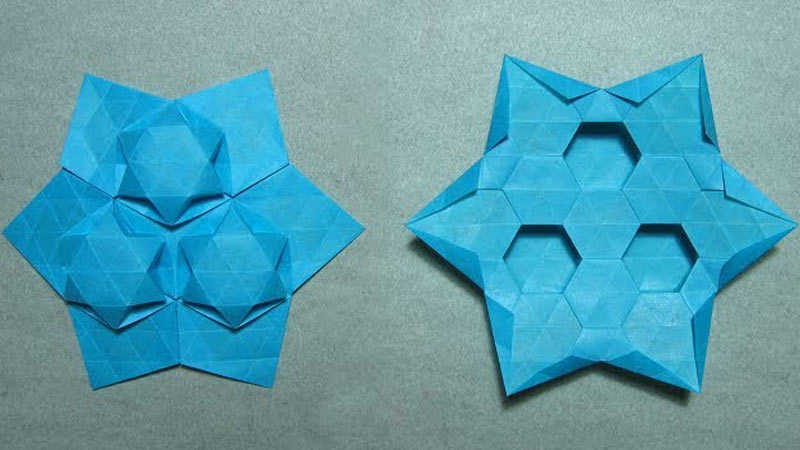
Tessellation origami is a mesmerizing art form that revolves around creating intricate and repeating patterns by folding a single sheet of paper.
Artists like Eric Gjerde are renowned for their mastery of tessellations. This style requires meticulous precision and a keen understanding of geometry.
The results are mesmerizing symmetrical designs that seem to multiply endlessly across the paper, offering a unique blend of art and mathematics.
5. Kirigami
Kirigami is a fusion of paper folding and cutting, diverging slightly from the strict origami rule of no cuts.
By strategically cutting the paper in combination with folds, kirigami artists create intricate pop-up cards, architectural models, and other decorative creations.
Kirigami offers a dynamic dimension to paper art, allowing for elaborate and three-dimensional designs that can be appreciated from various angles.
6. Action Origami
Action origami takes the art form to an interactive level by incorporating moving parts and mechanisms into the folded creations.
Classic examples include the flapping bird, a symbol of origami itself, and the jumping frog.
These models come to life as you engage with them, making them particularly enjoyable for both children and adults.
Action origami introduces an element of playfulness to the craft, adding a touch of whimsy to the art of folding.
7. Money Origami
Money origami transforms everyday currency notes into miniature works of art. This creative style allows enthusiasts to fold bills into various shapes and designs, from intricate animals to intricate flowers.
Money origami is not only an artistic expression but also a delightful way to gift money for special occasions, adding a personal touch to monetary gifts.
8. Complex Origami
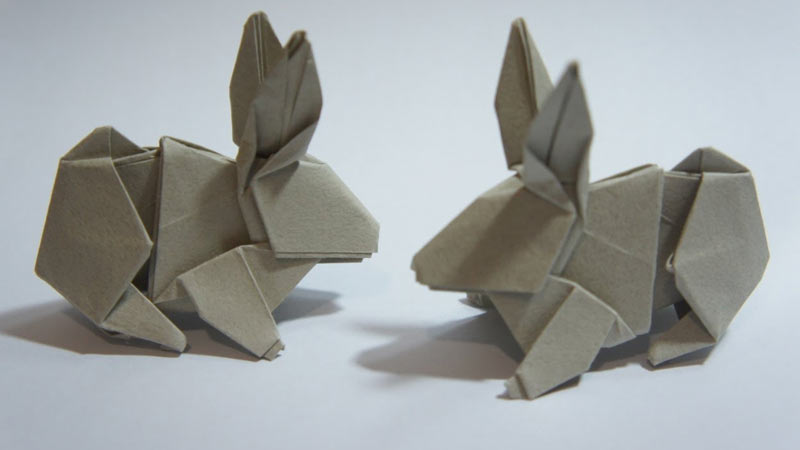
Complex origami is a realm where skilled artists tackle highly intricate and detailed models that demand exceptional precision and patience.
These creations can range from remarkably realistic animals with intricate features to complex geometric shapes that challenge the limits of folding.
Complex origami represents the pinnacle of the art form, where each fold is a testament to the artist’s mastery and dedication.
9. Krafty or Practical Origami
Beyond artistic expression, origami has practical applications that extend into everyday life. It’s employed in packaging design to create efficient and space-saving solutions.
Industrial designers leverage origami principles to craft compact and functional objects, and even space exploration missions have utilized origami to create compact structures for spacecraft.
Krafty or practical origami showcases the versatility of this ancient craft, proving its relevance in modern technology and design.
10. Mathematical Origami
The deep connection between mathematics and origami has led to a subcategory known as mathematical origami. Mathematicians often use origami as a tool to explore and illustrate mathematical concepts.
A famous example is the “Folding a Circle to a Square” problem, where the challenge is to fold a perfect square from a circular piece of paper using only origami folds.
Mathematical origami offers a unique blend of abstract mathematical principles and tactile creativity.
11. Origamic Architecture
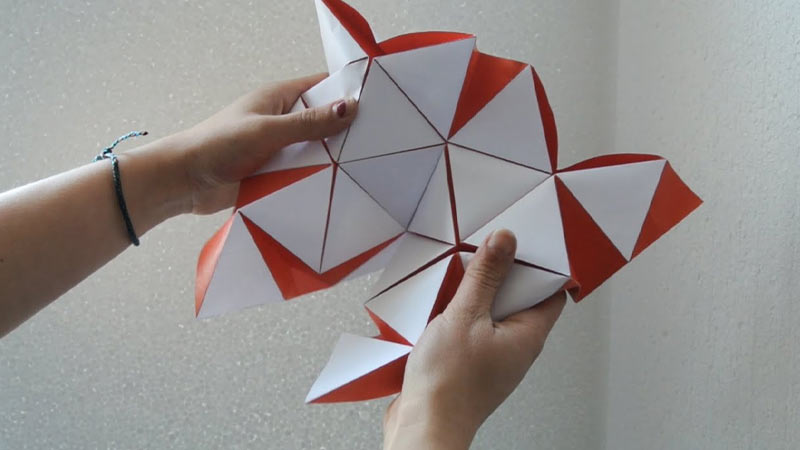
Origamic architecture is a captivating niche within origami where artists craft intricate architectural models and cityscapes using origami techniques.
These creations are renowned for their remarkable attention to detail and precision. Miniature buildings, bridges, and entire cityscapes come to life through the delicate art of folding paper.
Origamic architecture allows enthusiasts to reimagine iconic structures and design their architectural wonders, showcasing the artistic potential of origami in recreating the built environment.
12. Crease Patterns
Crease patterns are the blueprints of origami. Some enthusiasts focus on designing and folding from these intricate diagrams, which specify precisely where to make folds without providing a step-by-step guide.
Crease patterns offer a unique challenge, requiring an in-depth understanding of origami principles and geometry.
They serve as the foundation for complex and innovative origami designs, allowing artists to push the boundaries of the art form.
13. Washi Origami
Washi paper, a traditional Japanese paper crafted from mulberry fibers, brings a unique texture and aesthetic to origami projects.
This paper variety is particularly cherished for its elegant and rustic qualities. It is often used in traditional and ceremonial origami, adding a distinct cultural touch to folded creations.
The tactile experience of working with washi paper enhances the overall sensory richness of the origami process.
14. Prison Origami
Prison origami is a heartwarming and transformative style that involves folding origami in correctional facilities as a form of rehabilitation and creative expression for inmates.
This practice offers incarcerated individuals an opportunity for self-improvement, skill development, and a sense of accomplishment.
It can be a therapeutic outlet and a way to build self-esteem, fostering a positive environment within prison walls.
15. Origami in Science and Engineering
Origami principles have found remarkable applications in the fields of science and engineering. Researchers and engineers harness the power of origami to design structures and mechanisms for various practical applications.
Examples include folding solar panels that can be efficiently transported and deployed in space, collapsible medical devices for minimally invasive procedures, and even adaptable architectural structures that respond to changing environmental conditions.
Origami’s ability to create compact and efficient designs has revolutionized multiple industries.
FAQS
What is “Moving Origami”?
“Moving origami” involves origami models with interactive, movable parts, unlike traditional static origami.
How can I make origami 3d shapes?
To create 3D origami shapes, learn folding techniques that transform flat paper into three-dimensional forms.
What is the meaning of “collapse” in origami?
“Collapse” is the pivotal step where flat paper transforms into a 3D structure by folding along predefined creases.
What’s a “collapse fold” in origami?
A “collapse fold” is a critical stage in folding where multiple creases converge to create the desired shape.
Why is the “origami base” important?
The origami base is a fundamental starting pattern that influences the final look and complexity of the origami model.
To Recap
In origami, the term “collapse” encapsulates the transformative essence of this ancient art. It signifies the culmination of meticulous planning, precision, and creativity, where a flat and lifeless sheet of paper takes on new life as a three-dimensional masterpiece.
The collapse is the heartbeat of origami, where all folds and creases converge, giving rise to intricate sculptures and delicate shapes.
It is a testament to the artistry of the folder, a moment where imagination meets the tactile, and where simple paper becomes a canvas for boundless creativity.
The collapse in origami is the magical bridge between the two-dimensional and the extraordinary, where the beauty of geometry unfolds in the hands of the artist.
Leave a Reply